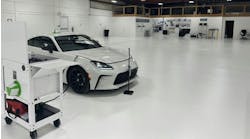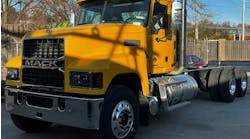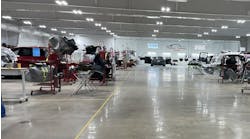Who's Driving?
To a student of automotive history, it seems the definition of "car" has changed just about every decade. To a large extent, changes have been determined as much by the market's desire as by technology because one wouldn't change without prompting from the other.
Like the engines that powered them, early cars were impractical and expensive, little more than a rich man's toy. But people wanted more from a car, so long before the self-starting piston engine and gearbox transmission had become the automotive powertrain, cars became dependable transportation tools, and they had a major impact on the economy.
As technology and roads improved, the tool became fast and comfortable, until a car was defined more by its performance and style than anything else. While the automobile has always been a status symbol, so many people treat their ride as a personal accessory/living space that today the definition of "car" has become "just about whatever you want it to be."
So where are the market's desires and technological possibilities leading us?So where are the market's desires and technological possibilities leading us? For the first time since the Model T Ford, the automotive powertrain has been redefined. Today there are three different gasoline/electric hybrid models on the market, and 10 more models will be introduced over the next three years.
The powertrain will be redefined again, probably by the end of this decade when fuel cell-powered vehicles are introduced. The first hydrogen refueling station is already scheduled for construction this year in California.
Yet, as big as these changes to the "car" might be, the biggest change is in how they have redefined the role of the driver. In these two types of vehicles, the driver no longer operates the engine or the brakes. The driver requests the computer to increase or decrease vehicle speed. These powertrains can't be operated any other way, but the new role of the driver didn't have to wait for them.
This year's SAE Conference on Automotive Dynamics, Stability and Controls began with opening remarks from BMW's vice president in charge of longitudinal dynamics. The conference centered on future control systems that will interpret the driver's intentions, detect the vehicle's movements and its environment and then determine the vehicle's response to the driver's commands. The short name for this is "the intelligent vehicle," and some of its systems are here now.
The 2005 Infiniti FX will have a vision-based lane departure warning system. Using electronic cameras to detect the lane markers, it alerts the driver if it decides the vehicle is about to wander out of its lane. Using similar technology, today's home-market Toyotas have distance-following cruise control programmed for stop-and-go traffic that can actually stop the car. In fact, there are already several models in production that will modify the driver's steering and braking inputs. They may even operate those systems without any driver input at all, depending on what the car decides is appropriate for conditions.
These are only the first steps toward the intelligent vehicle. Engineers envision a car that is almost organic in its ability to perceive and react to the driver's commands and the world around it. The only limits are computer processing speed and people's imagination. The question is, which people? Those producing the technology or those buying it? Does technology drive the market, or does the market demand new technology?
The answer might be even more scary than the question.




